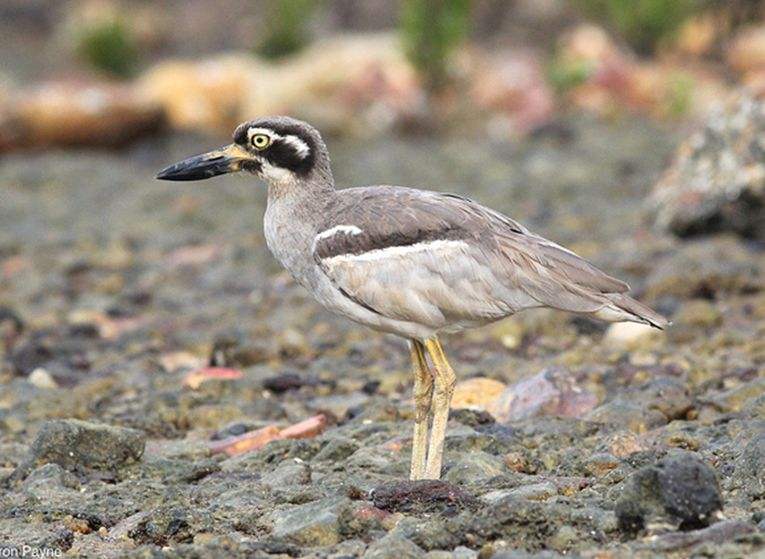Esacus magnirostris
IUCN
LCBasic Information
Scientific classification
- name:Esacus magnirostris
- Scientific Name:Esacus magnirostris,Great Thick-knee
- Outline:Wading birds
- Family:Charadriiformes Charadriinae Curlewynidae G.Curlewyn
Vital signs
- length:53-57cm
- Weight:No verification information
- lifetime:No verification information
Feature
It has big eyes, a thick mouth, and brown or yellow-green feet.
Distribution and Habitat
World distribution: China, Australia, Brunei, India, Indonesia, Malaysia, Myanmar, New Caledonia, Papua, New Guinea, Philippines, Singapore, Solomon Islands, Thailand, East Timor, Vanuatu.
China distribution: Hainan Island, Yunnan.
Great Stone Curlew mainly inhabits coastal beaches, reefs and mangroves by the sea.
Appearance
The forehead, eyes, top of head and sides of the head are black or dark brown. A wide and prominent white eyebrow line starts from the front of the eye and runs from the eye to the pillow. The front end of a wide black eye line is connected to the forehead. The eyes are black first and then back. The end is connected to the black color on the occipital side, forming a surround of the white eyebrow lines. The rest of the cheeks, chin, and throat are white, and the jaw lines are black, like a mustache around the mouth. They are also very eye-catching between the white cheeks and throat. The upper body is olive brown with slightly fine dark vertical stripes. The upper wing coverts are gray, with a white spot at the wing corner. The small wing coverts are dark brown with white tips. When the wings are folded, a wide dark brown and narrow white horizontal band is formed on the wing shoulder. The outermost three primary flight feathers are dark brown with wide white subterminal spots, the re
Details
Great Thick-knee is a medium-sized wading bird with no subspecies.

Great Thick-knee is a coastal bird that usually moves alone or in pairs, occasionally in small groups. It is mainly active at night and dusk, hiding in undisturbed concealed places during the day, and rarely foraging during the day. It mainly feeds on marine invertebrates such as small crustaceans and mollusks. It makes a loud hissing sound when angry, and its warning call is a loud "see-eek" sound. It often makes a rough whistle with two or three rising notes at night.
The breeding season of the Great Stone Curlew is from March to April or from August to December, depending on the region. Males and females breed in pairs. It usually nests on the sandy ground or on the beach above the tide line at the seaside. The nest is very simple, usually made by digging a shallow pit on the ground. Each nest lays 1-2 eggs, which are milky white with brown, black or gray spots and stripes. The size of the eggs is 60-69 mm × 43-47 mm.
Due to human disturbance and predation by invasive mammals, the population of the Great Stone Curlew has declined and it is listed as a near-threatened species.
Listed in the "National List of Terrestrial Wildlife with Important Economic and Scientific Research Value" (Item 180) issued by the State Forestry Administration of China on August 1, 2000.
Listed in the "Red List of Endangered Species of the World Conservation Union" (IUCN) 2016 ver 3.1-Near Threatened (NT).
Listed in the second level of China's "National Key Protected Wildlife List" (February 5, 2021).
Protect wild animals and stop eating game.
Maintaining ecological balance is everyone's responsibility!








